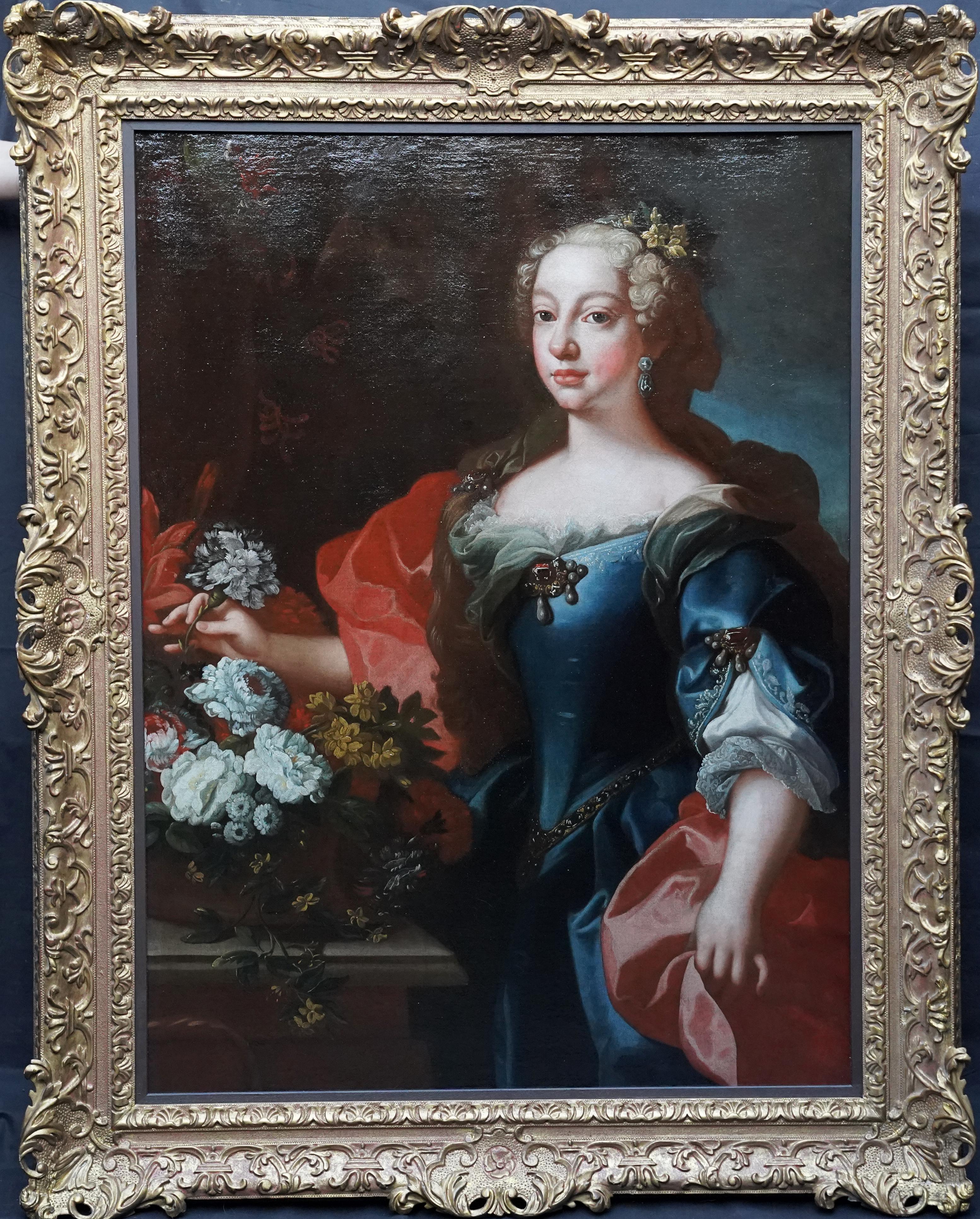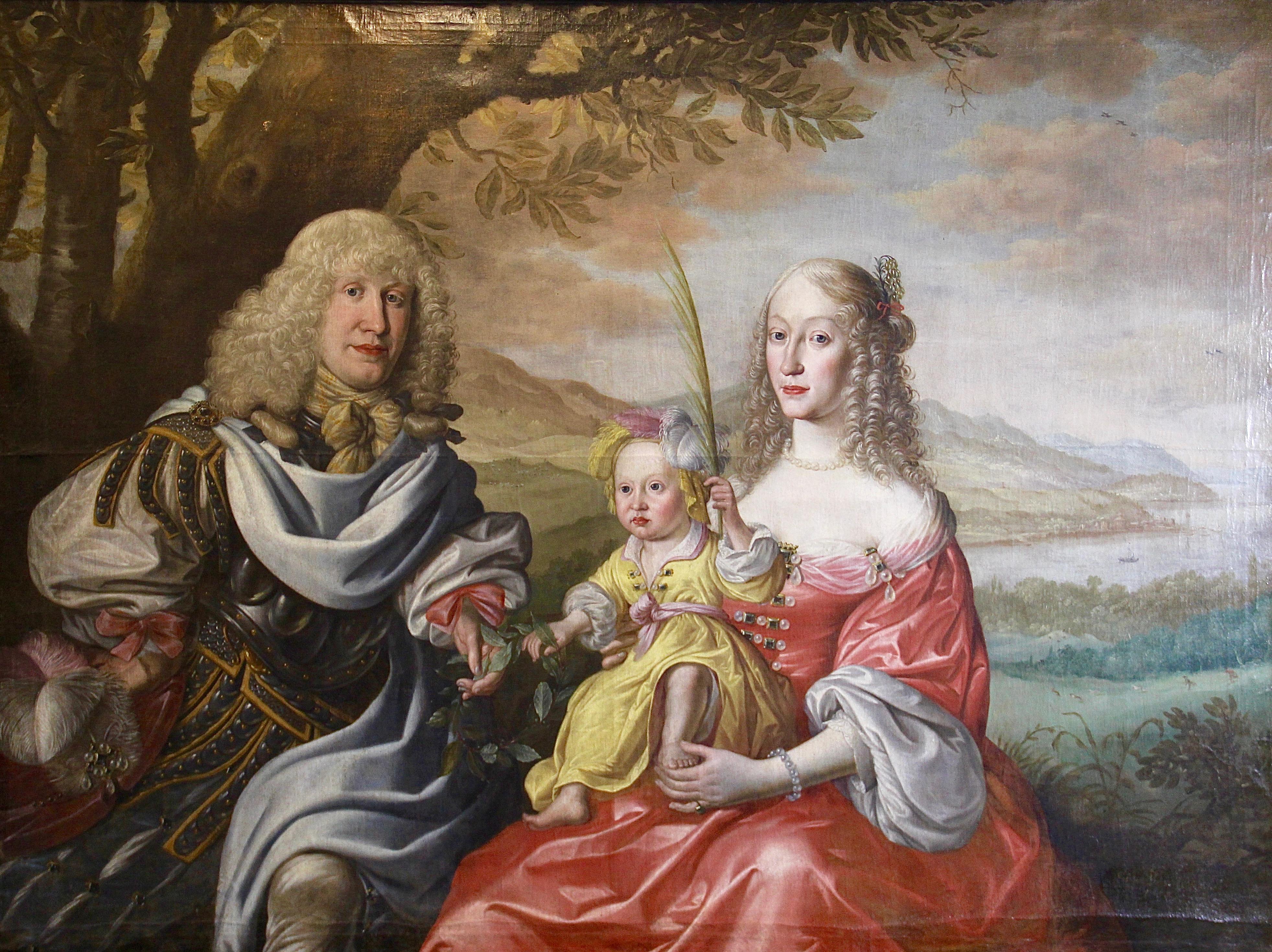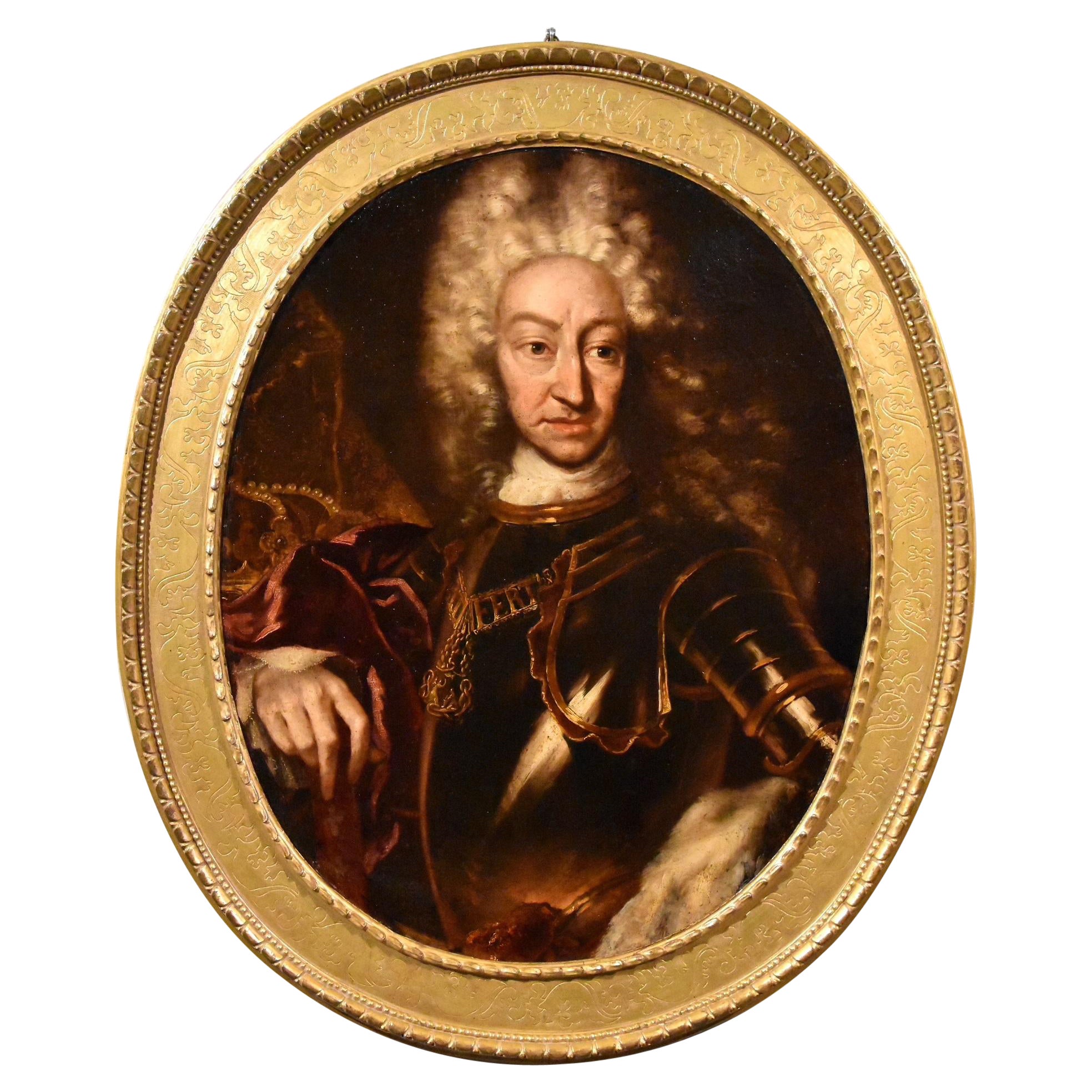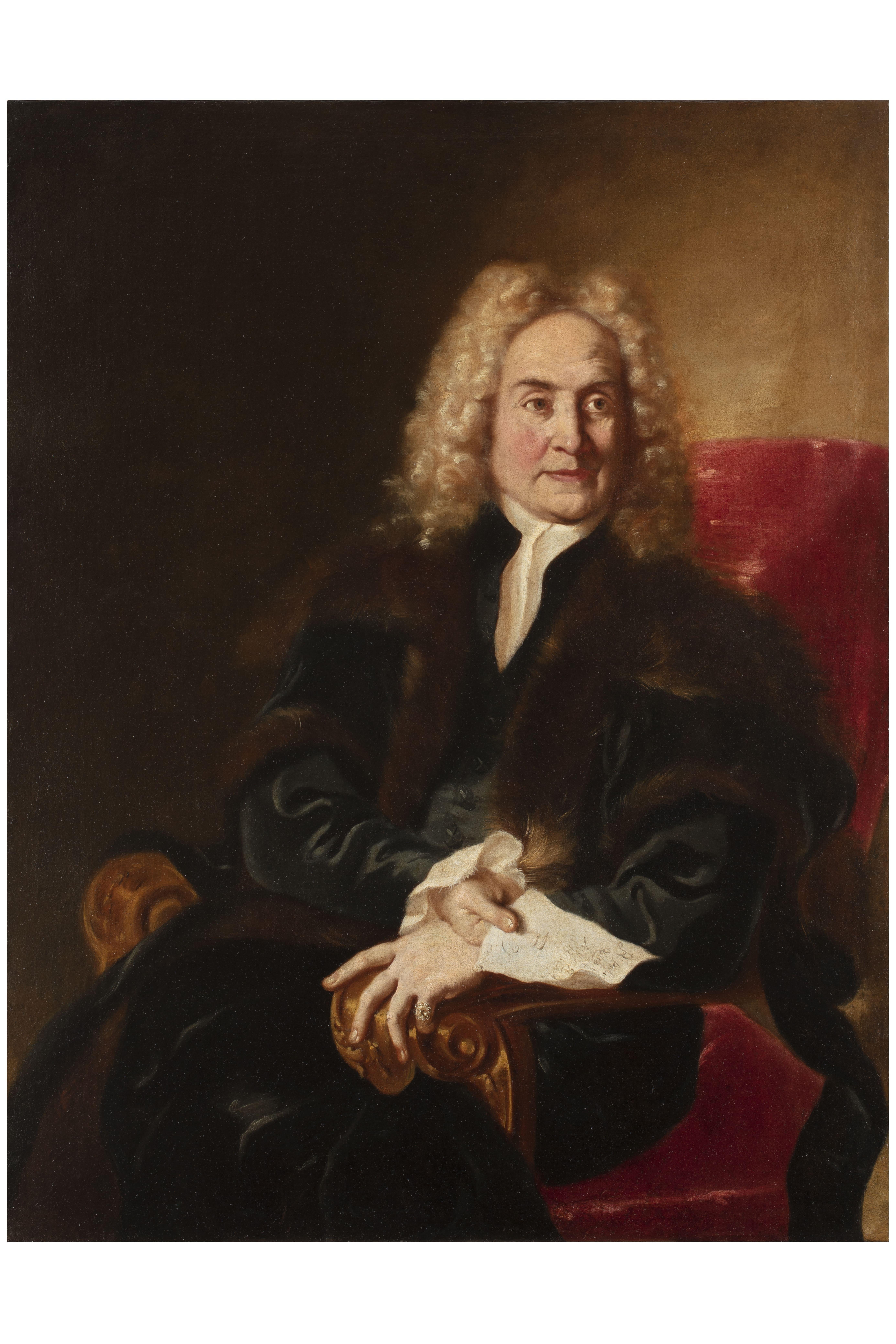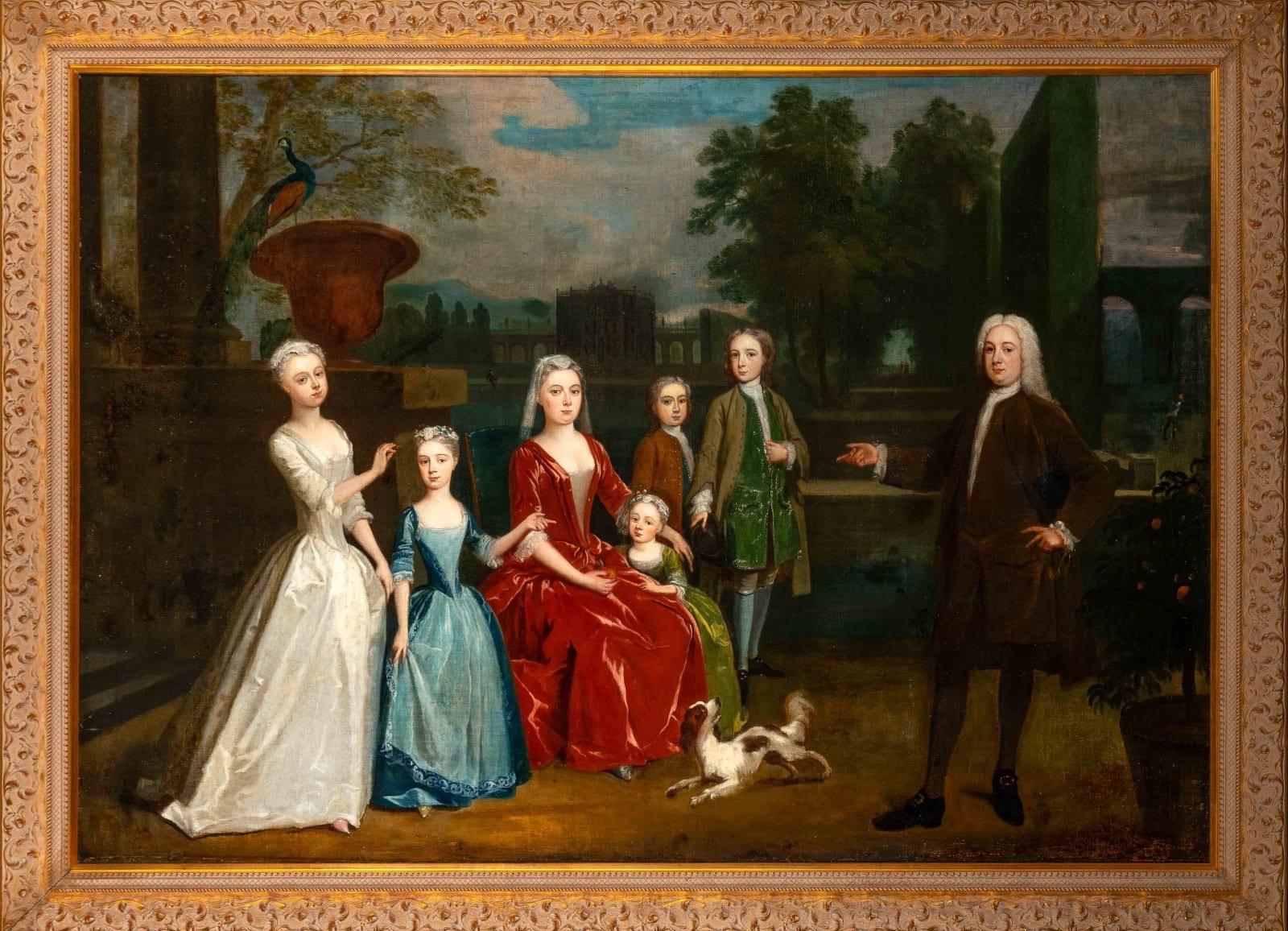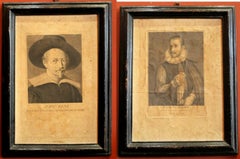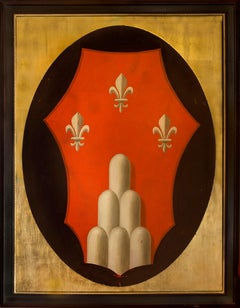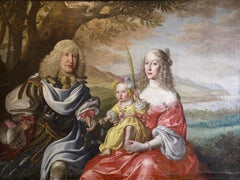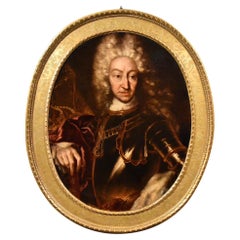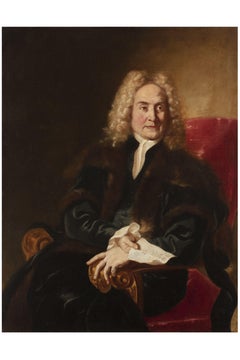Items Similar to Oil on Canvas Painting Portrait of the Italian Noble Family of Zanardi Count
Want more images or videos?
Request additional images or videos from the seller
1 of 14
Lucia Casalini TorelliOil on Canvas Painting Portrait of the Italian Noble Family of Zanardi Count1740 circa
1740 circa
$174,528.72
£126,967.72
€145,000
CA$238,181.61
A$265,236.71
CHF 138,041.05
MX$3,270,336.60
NOK 1,758,058.33
SEK 1,652,404.41
DKK 1,103,517.52
Shipping
Retrieving quote...The 1stDibs Promise:
Authenticity Guarantee,
Money-Back Guarantee,
24-Hour Cancellation
About the Item
This museum quality old master oil on canvas formal portrait painting depicting the family of the Count Zanardi is signed by the artist- the female painter Lucia Casalini Torelli- and published in a book dedicated to Casalini Torelli’s workshop and academy.
This palatial masterpiece artwork comes directly from the ancient Villa Maraini Guerrieri - Palidano di Gonzaga (Mantua), an historic Italian heritage building owned by the descendants of the family portrayed for more than two centuries, until 1998.
The big scale of this oil on canvas masterpiece painting states the relevance of Lucia Casalini Torelli as a painter. The present artwork is a formal family portrait painting that aim to introduce the characters depicted according to their social role in the society. The noble family is all gathered under a loggia overlooking a park, the landscape in the background is partially covered by a beautiful red cloth on the right side.
The father stands up and holds the hand of his eldest son, proudly introducing his future heir. The son wears a light-blue dress and red boots, he is depicted in a serious pose holding a black tricorn hat under his arm and a rapier sword on his belt.
The mother wears an elegant gold and dark green brocade dress, she is sitting with her youngest daughter on her knees while her second son is by her side. The little daughter wears a lovely long red and dress with white lace and holds an apple on her hand. The son stands next to his mother and is dressed in a brown priestly clothes.
This palatial old masters piece was probably painted in 1740 due to the similarities with Cardinal Doria’ s portrait, now on display at the Doria Palace Museum, the official residence of the Prince of Genoa.
The painting features original canvas (“prima tela”) and antique original patina, it is in excellent overall condition considering the age, use and its large scale. A formal detailed condition report and the results of the inspection with the UV lamp accompanied by photos is available on request.
As well as for its exceptional quality and quite perfect state of conservation, this painting is particularly important and even more valuable both for the artist who painted it and for its absolutely exclusive provenance.
Lucia painted the most prominent and powerful noble families of her time, the location of these paintings is unknown to the art market as it is extremely likely that the portraits are still kept in private collections.
Furthermore, Lucia was one of the most appreciated artists of her time, so important that she was admitted as a member of the academy at a time when women were forbidden to attend these studies.
In 1706, Felice Torelli-Lucia's husband- was one of the founders of the Accademia Clementina; Lucia was elected an honorary member in 1726, a few years after Rosalba Carriera became a member of the Academy. The active participation of Lucia and Felice in the Academy contributed to their artistic and social success in Bologna. Her self portrait is at the Uffizi Gallery in Florence.
As regards the provenance, this old master painting come directly from Villa Maraini Guerrieri - Palidano di Gonzaga (Mantova) owned by Zanardi family - whose descendants are still alive- on the occasion of the important auction of the entire furnishings and fine art objects of the villa.
Also, from the date of its execution (around 1740) until its sale in 1998, the painting has always been kept in the private villa of the Zanardi counts, this certainly contributed to its excellent state of conservation.
The villa is a historic building built in 1746 and was owned by the family until 1998.
The charming and distinctive feature of the Villa is represented by the fact that, from its construction up to 1998, belonged to the same noble family lineage and, therefore, it was kept, together with the decorations, furniture and paintings in it contained, with extreme confidentiality, without ever being disclosed or exhibited to the public.
Measures: Height 240, Width 217 cm. Signed low left “Casalini Torelli Fece”
Literature: Prof. I. Graziani, ‘La bottega dei Torelli’, Editrice Compositori, 2005, pp. 105, 205.
Irene Graziani is a prominent scholar and professor at the University of Bologna who dedicates her research activity to Emilian painting of the 18th century, recently she has also published a monograph on Stefano Torelli, son of Lucia, who became the official painter at the court of Catherine of Russia.
Biography:
Lucia Casalini Torelli (Bologna 1677-1762) started her career when she was 13 years old, she was the pupil of Giovan Gioseffo dal Sole, a famous baroque painter. She married the painter Felice Torelli and two of their seven children, Stefano and Anna, become painters. Lucia and Felice married in 1701, and soon opened their own studio with students. The works of art of their "bottega" were soon very appreciated. Casalini Torelli's works were mostly of sacred subjects, but she also specialized as a portrait painter, creating portraits of the prominent Bolognese and Northern Italian families of the era. Lucia Casalini Torelli was one of the principal female italian painters of the 18th century. Felice Torelli was one of the founders of the Accademia Clementina; Lucia was elected an honorary member in 1726. The active participation of Lucia and Felice in the Academy contributed to their artistic and social success in Bolognese during the first half of the 18th century. One of her self-portrait is exposed in the Corridoio Vasariano at the Uffizi Museum, Florence.
Stefano Torelli, Lucia’s son, become court’s painter of the Russian Emperor and depicted the famous “portrait of Catherine II in coronation dress”. The interest in the contemporary Italian paintings approached to the Russian court thanks to Empress Catherine. The empress, celebrated as great patron of the arts and literature, was amazed by the sophisticated and meticulous works of Casalini Torelli. The Historical and sacred theme, combined with the French portraiture technique of the Grand Sieclè, guaranteed to the Torelli family a privileged place in the Empress collection.
It’ s not a coincidence if nowadays in the Hermitage, originally the gallery where Catherine showed to her closer guest her private collection, are on display some works of this Bolognese family of painters.
- Creator:Lucia Casalini Torelli (1677 - 1762)
- Creation Year:1740 circa
- Dimensions:Height: 94.49 in (240 cm)Width: 85.44 in (217 cm)Depth: 1.19 in (3 cm)
- Medium:
- Movement & Style:
- Period:
- Framing:Framing Options Available
- Condition:Original canvas and patina. The whole surface is stable and uniform, bright and saturated colors. No signs of invasive restoration. Formal condition report and UV lamp pictures available on request. Artisanal custom hand made frame on request.
- Gallery Location:Firenze, IT
- Reference Number:Seller: Galleria Antonio Esposito di Chiara Esposito1stDibs: LU101113393481
About the Seller
5.0
Vetted Professional Seller
Every seller passes strict standards for authenticity and reliability
Established in 1950
1stDibs seller since 2018
18 sales on 1stDibs
- ShippingRetrieving quote...Shipping from: Firenze, Italy
- Return Policy
Authenticity Guarantee
In the unlikely event there’s an issue with an item’s authenticity, contact us within 1 year for a full refund. DetailsMoney-Back Guarantee
If your item is not as described, is damaged in transit, or does not arrive, contact us within 7 days for a full refund. Details24-Hour Cancellation
You have a 24-hour grace period in which to reconsider your purchase, with no questions asked.Vetted Professional Sellers
Our world-class sellers must adhere to strict standards for service and quality, maintaining the integrity of our listings.Price-Match Guarantee
If you find that a seller listed the same item for a lower price elsewhere, we’ll match it.Trusted Global Delivery
Our best-in-class carrier network provides specialized shipping options worldwide, including custom delivery.More From This Seller
View AllItalian Painter’s Portrait Engravings on Laid Paper on Canvas in Ebonized Frames
Located in Firenze, IT
These beautiful Italian 18th Centruy engravings on laid paper feature the portrait of two famous Italian painters: Veronese and Guido Reni. They were engraved by Pier Antonio Pazzi a...
Category
18th Century Baroque Portrait Prints
Materials
Cotton Canvas, Laid Paper, Engraving
Italian Oil on Canvas Painting Coat of Arms in Gold Leaves Panel and Black Frame
Located in Firenze, IT
This huge Italian 19th century armorial painting features the coat of arms of Montini, a noble Italian family that
has among its ancestors the Archbishop of Milan, later known as Pope Paul VI.
The large oval canvas has a brown and red background, the latter shaped like a shield, in which six mountains
(from the etymology of the surname) and three white fleur de lis are painted.
This big scale palatial oil painting...
Category
Late 19th Century Italian School Figurative Paintings
Materials
Oil, Canvas, Wood
Italian Oil on Alabaster Painting Pompeian Interior Scene in Ormolu Frame
Located in Firenze, IT
This Italian 19th century oil on alabastrer painting depicts an opulent interior in full ancient neoclassical Pompeian style with people festing.
The figurative inner scene is painted on a rectangular alabaster slab and housed in a wonderful giltbronze frame resting on casted arrow feet.
This is a single section of a bigger surtout de table. You can now use it as a decorative centrepiece on a table or on a console or turn it into a wall decoration. We can provide framing options in this case.
The characters enjoy a rich banquet in an elaborate interior, the room renderings...
Category
19th Century Italian School Interior Paintings
Materials
Alabaster, Bronze
Italian 18th Century Oval Religious Oil on Canvas Painting with Saint Dominic
By Francesco de Mura
Located in Firenze, IT
This beautiful Italian 18th Century old masters oil painting on oval canvas with giltwood frame is attributed to Solimena and features a religious scene.
In this splendid oval-shaped painting are depicted Saint Dominic...
Category
18th Century Old Masters Figurative Paintings
Materials
Canvas, Oil
Venice Landscape Italian Oil on Canvas Painting in Gilt Wood Frame, Belle Epoque
Located in Firenze, IT
This delightful turn of the century (early 20th century) oil on canvas painting represents an Italian landscape with one of the most famous squares in the world: Piazza San Marco in ...
Category
Early 20th Century Impressionist Landscape Paintings
Materials
Canvas, Oil
Italian Impressionist Oil on Board Marine Landscape Painting Naples Bay View
By Francesco Coppola Castaldo
Located in Firenze, IT
Everyday fishermen life is captured in this wonderful Italian impressionist late 19th century oil painting on thin board titled fishermen ashore. We love the neutral and natural colo...
Category
Late 19th Century Impressionist Landscape Paintings
Materials
Oil, Board
You May Also Like
Portrait of Maria Vittoria Queen of Portugal - Italian Old Master oil painting
Located in London, GB
This lovely Italian Old Master portrait oil painting is by Domenico Maria Sani. Painted circa 1732 the sitter is of Maria Anna Vittoria (1718 - 1788), daughter of Philip V and Elisabetta Farnese, who in 1729 married Joseph prince of Brazil and king of Portugal...
Category
Mid-18th Century Old Masters Portrait Paintings
Materials
Oil
SIMON PETER TILEMANN, Family Portrait, 1658, Old Master. Baroque Rococo Painting
By Simon Peter Tilemann
Located in Berlin, DE
Extremely decorative and large oil painting from the 17th century.
Restored in places.
Signed and dated Simon Peter Tileman 1658 fecit 'lower right
Dimensions without frame.
From Wikipedia, the free encyclopedia:
Simon Peter Tilemann (1601, Lemgo – 1668, Vienna), was a German Baroque painter who was active Bremen, Kassel and Italy.
According to Houbraken he first learned to paint flowers and he had a daughter who could paint flowers in watercolors. He was a good landscape painter who spent many years in Italy, but later switched to portrait painting and who painted the portrait of Ferdinand...
Category
1650s Old Masters Portrait Paintings
Materials
Canvas, Oil
King Portrait Clementi Paint Oil on canvas Old master 18th Century Italian
Located in Riva del Garda, IT
Maria Giovanna Battista Clementi known as La Clementina (Turin, 1692 - Turin, 1761), Attributable to
Portrait of Victor Amadeus II of Savoy (Turin 1666 - Moncalieri 1732) king of Sardinia, duke of Savoy, marquis of Saluzzo and duke of Monferrato, prince of Piedmont and count of Aosta, Moriana and Nizza from 1675 to 1720.
Oil on oval canvas,
79 x 62 cm., Framed 98 x 82 cm.
The portrayed in this fascinating virile portrait is King Vittorio Amedeo II of Savoy, portrayed in ceremonial armor and red cloak according to the traditional courtly iconography, represented half-length, slightly three-quarter-length, with the towering "courtly" wig, according to the dictates of fashion of the first decades of the century, of French inspiration.
In order to represent the power embodied in our austere portrayal, the sovereign is immortalized with the symbolic attributes of the power of the family, identifiable in the ancient crown of the Kingdom of Sardinia, in the scepter with the Mauritian cross and in the necklace of the Supreme Order of the Most Holy Annunziata, established in 1364 by Amedeo VI, as the highest honor of the House of Savoy...
Category
18th Century Old Masters Paintings
Materials
Oil
$11,177 Sale Price
35% Off
17th-18th Century By Niccolò Cassana Portrait of a Gentleman Oil on Canvas
Located in Milano, Lombardia
Niccolò Cassana (Venice, Italy, 1659 - London, UK, 1714)
Title: Portrait of a Gentleman
Medium: Oil on canvas
Dimensions: without frame 119.5 x 92.5 cm
Painting without frame.
Expe...
Category
17th Century Old Masters Portrait Paintings
Materials
Canvas, Oil
18th century painting of the Dalbiac family in the gardens of a country house
By Charles Philips
Located in Bath, Somerset
The painting depicts James (Jacques) Dalbiac, his wife Louise (ne de la Porte) and their five children, James, Charles, Louise, Marianne and Martha in the ornamental gardens of a grand country estate.
The extensive gardens extend into the distance with gardeners working in the background and figures strolling through the avenues of trees. A peacock and peahen can be seen on the wall to the left and a potted orange tree to the right. Louise Dalbiac holds an orange taken from the orange tree, aluding to the family's faith and their loyalty to the protestant King William of Orange and their adopted country.
The Dalbiacs were wealthy London silk and velvet merchants of French Huguenot origin who had fled France at the end of the 17th century to escape persecution for their protestant faith. England offered safe refuge and their skills and industriousness allowed them to establish one of the most successful businesses in London's Spitalfields which became a new centre of the silk trade, effectively leading to the collapse of the once dominant French silk industry. Both sons, James and Charles followed their father and Uncle into the family business, successfully growing the family's fortune and each going on to own their own country estates.
A conversation piece is a genre of painting used to describe group portraits of families and friends, often depicted with their servants and family pets and set within an elegantly furnished interior or the garden of a grand country house. They were a celebration of the intimacy of family relations as well as a sign of status, property and the power of succession. The informality of conversation pieces grew popular in 18th century England, allowing the sitters to present themselves in a more relaxed pose, perhaps engaged in intellectual conversation or showing their talents or interests. In this present portrait, the Dalbiacs are shown richly dressed and and at leisure in a grand country house setting, conveying their success and cultural and social aspirations.
Charles Philips (c.1703–1747) was an English artist known for painting a number of portraits and conversation pieces for noble and Royal patrons in the mid-eighteenth century. He was the son of portrait painter Richard Philips...
Category
Early 18th Century Old Masters Portrait Paintings
Materials
Canvas, Oil
Queen Maria Theresa King Van Meytens 18th Century Paint Oil on canvas Old master
Located in Riva del Garda, IT
Martin van Meytens (Stockholm 1695 - Vienna 1770)
Portrait of Empress Maria Theresa of Habsburg (Vienna 1717 - 1780)
Portrait of Emperor Francis I of Lorraine (1708 - 1765)
oil on ...
Category
18th Century Old Masters Paintings
Materials
Oil
$15,647 Sale Price
20% Off
More Ways To Browse
Italian Antique Oil Lamp
18th Century Lace
Emperor Empress Art
Antique Italian Swords
Black Brocade Dress
Loggia Furniture
Blue Brocade Dress
Antique Blue Oil Lamp
Annas Antiques
Red Brocade Dress
Green Brocade Dress
Red Antique Oil Lamp
Tricorn Hat
Hat Stand Lamp
Empress Catherine
Antique Rapiers
Antique Student Oil Lamp
Used Rapier Sword
